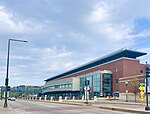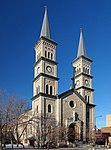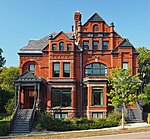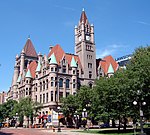Festival of Nations (Minnesota)
The Festival of Nations is an annual multicultural festival in the American Midwest, organised by the International Institute of Minnesota. Since 1932, its goal has been to inspire people to discover more about their world and embrace the rich cultural diversity in their community. Nearly 100 ethnic groups come together for a unique, 4-day experience that celebrates cultural heritage through dancing, performances, exhibits, demonstrations and cuisine. Nearly 100 ethnic groups participate in this unique, 4-day event that features dancing, performances, exhibits, demonstrations and cuisine from all over the world. It is a program of the International Institute of Minnesota, whose mission is to "assist New Americans in becoming self-sufficient and participating fully in American society." As Minnesota's cultural landscape expands to include more immigrants, the community benefits both culturally and economically. Through the provision of a stage and platform for the new artists, and the sharing and documentation of this heritage. As the Festival evolves every year, they welcome new ethnic groups and offer programming that reflects the diversity of their community. Festival of Nations is currently directed by Aisling Reynolds.
Excerpt from the Wikipedia article Festival of Nations (Minnesota) (License: CC BY-SA 3.0, Authors).Festival of Nations (Minnesota)
St. Paul Skyway, Saint Paul Downtown
Geographical coordinates (GPS) Address Website Nearby Places Show on map
Geographical coordinates (GPS)
| Latitude | Longitude |
|---|---|
| N 44.944722222222 ° | E -93.101111111111 ° |
Address
Xcel Energy Center
St. Paul Skyway
55155 Saint Paul, Downtown
Minnesota, United States
Open on Google Maps










